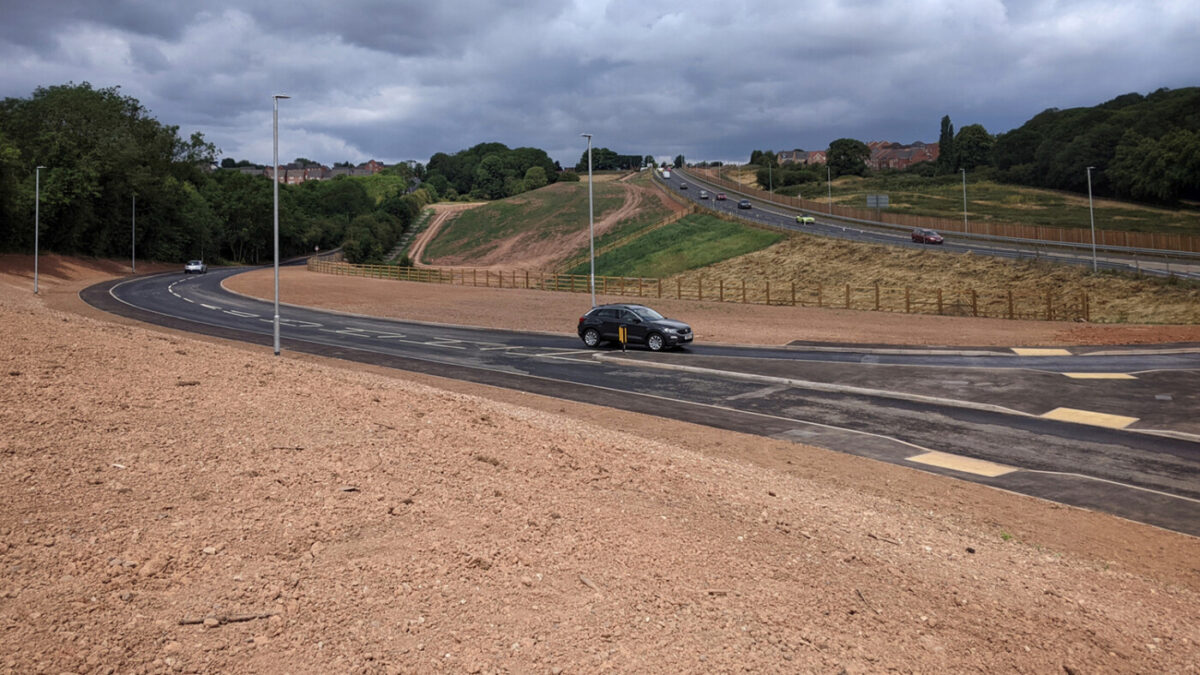Procured through the Midlands Highways Alliance MSF3 Framework, Colliery Way is a 3.8km single carriageway road to the North-East of Nottingham linking the B684 Mapperley Plains Road and the A612 Trent Valley Road/Nottingham Road. Work involved seven key junctions to integrate the new road with the existing highway network and provides access to the Gedling Colliery redevelopment site. Promoting sustainable travel, a 3m footway/cycleway along the route has also been constructed.
Following 50-years in the pipeline, the aim of this project was to enable sustainable redevelopment of the former Gedling Colliery/Chase Farm site and improve journey times, as well as reduce congestion through Gedling Village. This improvement will be instrumental in reducing carbon and bringing local economic benefits including new homes, jobs and businesses.
An exemplar of partnership working, Via East Midlands, Balfour Beatty (BB), Nottinghamshire County Council (NCC) and the supply chain formed a Project Delivery Partnership (PDP), co-locating throughout preconstruction and construction.
Working as a PDP, significant environmental improvements, innovative solutions, and community engagement combined to deliver a fantastic new piece of infrastructure for Nottinghamshire.
Constructed during Covid-19, the project was delivered on time and budget, with over half a million hours worked without injury. Embedding behavioural safety, we raised 3,600+ observation cards.
Three Winning Facts:
- We scored five innovation points across our CCS visits and achieved an industry-leading final score of 49/50 demonstrating our commitment to the community, environment, and workforce, through innovation and collaboration.
- With key environmental considerations, we built a specialist bat house, seven badger tunnels, six amphibian crossings and seven bat hop-overs. Woodland edge planting/hedgerow planting/species-rich grass seeding resulted in 53,000 new trees, achieving 40% increase in woodland.
- Total earthworks on the project involved moving 512,000 cubic metres of earth (enough to fill 204 Olympic swimming pools) with all excavated earthworks materials re-used on site.


